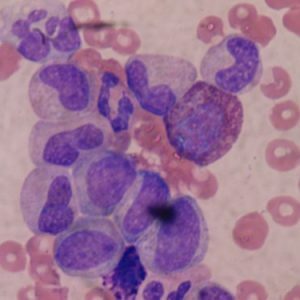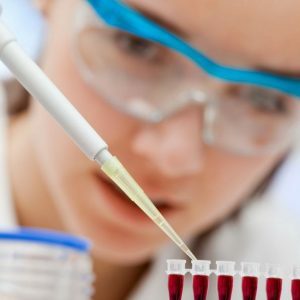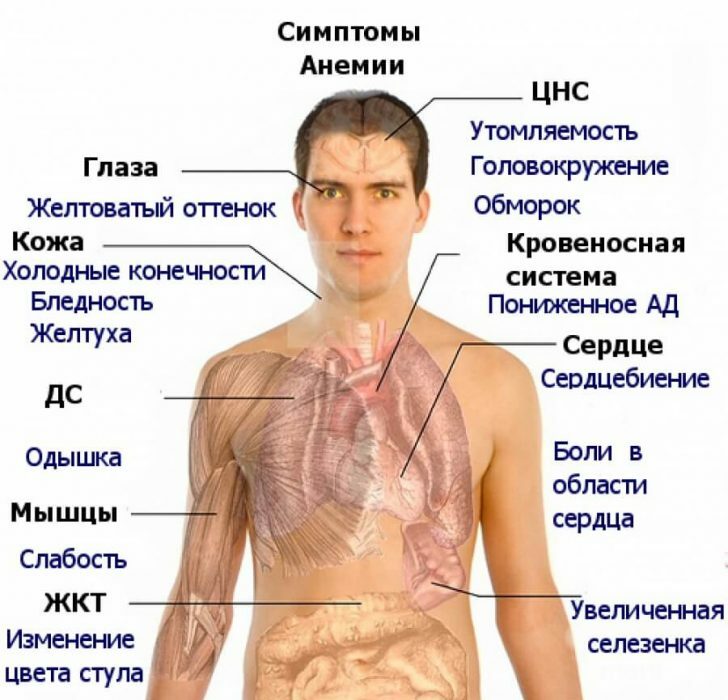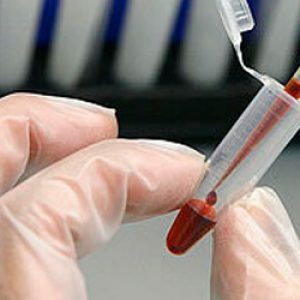Granulocytopenia: causes and treatment

Granulocytopenia belongs to the category of diseases of the circulatory system. This condition, accompanied by a decrease in the number of granulocytes in the blood.The total number of white blood cells is also usually reduced, but in some cases it remains normal.
Granulocytes are one of the types of white blood cells called leukocytes.Actually, leukocytes are divided into granular, i.e.Granulocytes, and agranulocytes( non-grained).
In turn, the group of granulocytes include neutrophils, basophils and eosinophils.This separation is due to the reaction of granular cells to the processing of various coloring substances.So, on eosinophils the acid paint operates, i.e.Eosin, on basophils - alkaline, i.e.Hematoxylin, on neutrophils - both types of paints, i.e.In this case the last group of cells exhibits neutral properties with respect to the coloring components: hence the name.
Table of contents: Granulocyte functions Granulocytopenia varieties Causes of granulocytopenia Symptoms of granulocytopenia Diagnosis Treatment of granulocytopenia How to prevent the development of granulocytopenia?Granulocyte functions
Granulocyte properties are due to the presence of microgranules containing enzymes that perform an important role for the body: they destroy pathogenic microorganisms.
Thus, granulocytes are a necessary part of the human immunodeficiency system, because they react to dangerous antigens that enter from the outside into the body.
With a noticeable lack of granulocytes in the blood, immunity in the first place decreases, because cells that perform the role of phagocytes( "devourers" of foreign cells) do not have time to do their work and in time to destroy dangerous microorganisms .In this case, the organism becomes vulnerable to any microbes that are abundantly available on various subjects, in the air and even in the human body itself.
Varieties of granulocytopenia
Depending on the type of granulocytes whose blood content decreases pathologically, granulocytopenia is divided into the following varieties:
- neutropenia - with neutrophil deficiency;
- basepenia - with a lack of basophils;
- eosinopenia - with a deficiency of eosinophils.
It is possible to reliably determine the type of ailment only after performing a detailed blood test.
Thus, the diagnosis of neutropenia( one of the varieties of granulocytopenia) can be made if the neutrophil count in the blood sample deviates significantly from the norm, which is 1500/1 μl.
Based on this, the stages of the disease are determined:
- is mild - if indicated value is more than 1000 neutrophils contained in 1 μl;
- medium-heavy - from 500 to 1000 in 1 μl;
- severe - below 500 neutrophils per 1 μl.
The disease can occur in an acute( developing in a few days) or chronic form.Dangerous is considered acute and at the same time a severe form of the disease.
Causes of granulocytopenia
The development of granulocytopenia can be caused by several factors:
- bacterial infections, especially lung, skin and larynx lesions;
- genetic predisposition;
- Richter's syndrome, which is an innate disease manifested by blood diseases, including granulocytopenia;
- bone marrow diseases, including aplastic anemia, leukemia, myelofibrosis, etc.;
-
 poisoning by some plants, for example, the podophyllum thyroid.This small plant contains substances used in medicine for the removal of warts and papillomas.The fruits of the podophyll are edible only in small amounts.In case of abuse, poisoning accompanied by changes in blood composition is possible;
poisoning by some plants, for example, the podophyllum thyroid.This small plant contains substances used in medicine for the removal of warts and papillomas.The fruits of the podophyll are edible only in small amounts.In case of abuse, poisoning accompanied by changes in blood composition is possible; - pathological disorders in reticulocytes.As a result, macrophage disturbances begin to destroy granulocytes and other blood cells;
- reduction of granulocyte synthesis in bone marrow structures.Such an effect on the process of the formation of cells is provided by taking drugs and radiotherapy;
- hypersplenism - excessive destruction of blood cells in the greenery;
- use of certain medications, in particular - some antiarrhythmics, antibiotics, antimetabolites.Consequently, long-term use of such drugs is dangerous pathological changes in the composition of blood cells;
- significant deficiency of certain vitamins, especially B12 and folic acid;
- the effect of certain substances used in chemotherapy for oncological diseases;
- negative effect of radiation therapy.
Sometimes the cause of granulocytopenia is difficult to establish, especially during the initial examination of the patient, so the doctor appoints the necessary examinations for this purpose.
Symptoms of granulocytopenia
 Because granulocytopenia is a relatively rare disease, the patient himself can not always make such a diagnosis.In addition, due to the presence of certain symptoms, it is almost impossible to suspect this blood disease.
Because granulocytopenia is a relatively rare disease, the patient himself can not always make such a diagnosis.In addition, due to the presence of certain symptoms, it is almost impossible to suspect this blood disease.
The clinical picture in the development of granulocytopenia is usually due to the symptoms of the underlying disease.Since the appearance of this disease in the blood sharply decreases the amount of granulocytes that play the role of phagocytes( "protectors" of the body from infections), then any bacterial disease can occur in the most severe form.
Even simple respiratory ailments in this case are quite painful, not to mention the flu or bronchitis.The patient with granulocytopenia also runs the risk of developing tularemia, miliary tuberculosis, typhoid fever and other dangerous infectious diseases.
Therefore, if infections literally "stick" to a person, proceed in severe form, then you can suspect the presence of granulocytopenia or another blood disease.
Confirm suspicion or quickly dispel fears will help the delivery of simple tests.
Diagnostics
For the diagnosis of granulocytopenia, blood tests, including general and biochemical tests, are usually prescribed.If necessary, perform more detailed blood sample analysis, as well as bone marrow examination.
Patient has a high probability of granulocytopenia if:
- in the blood, the number of leukocytes is markedly reduced;
- there are only single granulocytes in blood samples;
- revealed severe neutropenia;
- , bone marrow puncture revealed extremely immature cell samples that are the precursors of granulocytopoiesis( the process of granulocyte formation).
Granulocytopenia is diagnosed by careful counting of blood cells and processing the results of other analyzes.
Treatment of granulocytopenia
When confirming the diagnosis of granulocytopenia, the patient is prescribed such treatment measures:
-
 administration of drugs that stimulate the formation of granulocytes in bone marrow tissues;
administration of drugs that stimulate the formation of granulocytes in bone marrow tissues; - refusal to take medications that could cause the development of the disease;
- Avoiding exposure to radiation, some toxic substances;
- refusal to eat smoked, pickled products, as well as food with mold;
- combating the consequences of infections that could develop after a decrease in the number of granulocytes in the blood or cause a similar condition;
- reception of antibiotics for the elimination of bacterial infection, as well as for prevention;
- if necessary, the appointment of antifungal medicines;
- in severe cases - providing the patient with sterile conditions in a special room, which is regularly treated with ultraviolet for the purpose of disinfection;
- use of corticosteroids or immunoglobulins, if hormonal or autoimmune disorders led to the appearance of granulocytopenia;
- administration of vitamins in the presence of signs of a shortage of these substances;
- treatment of a major disease that could cause granulocytopenia, by taking anti-inflammatory or other means.
How to prevent the development of granulocytopenia?
Prevention of granulocytopenia is as follows:
- the greatest possible reduction in contact with real or potential carriers of infection;
- reduction or elimination of the effects on the body of a number of toxic substances: gasoline, glue, varnish, oil, paints, various solvents, pesticides;
- reduced consumption of those types of products that were treated with preservatives, pesticides, as well as exclusion from the diet of spoiled or not quite high-quality food;
- prevention of the consumption of drugs, especially antibiotics, analgesics, sulfonamides, without the appointment of a specialist;
- timely and highest quality treatment of existing ailments, especially infectious-inflammatory;
- monitoring of the effects of radiation on the body.Do not exceed the maximum possible dose of radiation.
 Please note! The impact of provoking factors on the body of each person is always individual.Some people remain healthy even after receiving a significant dose of dangerous ionizing radiation.Others may become seriously ill after fleeting contact with toxic substances.
Please note! The impact of provoking factors on the body of each person is always individual.Some people remain healthy even after receiving a significant dose of dangerous ionizing radiation.Others may become seriously ill after fleeting contact with toxic substances.
It is almost impossible to completely avoid the influence of all factors, but if you maintain your health at the proper level, eat fully and maintain an acceptable level of physical activity, you can minimize the risk of blood diseases, including granulocytopenia.
Maintenance of normal blood composition is especially important, because even a slight decrease in the number of granulocytes, in particular neutrophils, significantly reduces the body's resistance to all kinds of infections.In this case, even relatively harmless bacteria that permanently inhabit the surface of the skin or mucous membranes of various organs can cause severe ailments.That is why prevention is the most important link in the fight against such a serious disease.
Совинская Елена, medical reviewer



